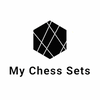Introduction to Chess and Checkers
Chess and checkers are two of the most widely played board games across the globe. Both games are played on a square board and are known for their strategic depth, yet they vary significantly in gameplay, tactics, and history. Understanding these differences can enhance appreciation for both games and provide insight into their cultural and intellectual significance.
Historical Background
Chess: Chess originated in India around the sixth century AD, known then as Chaturanga. It spread into Persia, became known as Shatranj, and later evolved in Europe where it took its current form in the 15th century.
Checkers: Also known as Draughts, checkers has origins that trace back to ancient Egypt, circa 3000 BC. It has undergone various adaptations with the most recognized modern version solidifying in 16th century France.
Gameplay and Rules
Chess
Chess is played on an 8x8 grid with each player controlling sixteen pieces: one king, one queen, two rooks, two knights, two bishops, and eight pawns. The objective is to checkmate the opponent's king, which means putting the king in a position to be captured ('check') from which there is no escape. The game requires strategic planning, long-term positioning, and often involves complex tactics during play.
Checkers
Checkers is played on the same 8x8 board, typically using only the black squares. Each player starts with 12 pieces positioned on the three closest rows towards them. The main aim is to capture all opponent's pieces or block them so they cannot make a move. Pieces move diagonally and can capture an opponent's piece by jumping over it.
Strategic Complexity
Both games require strategic thinking and planning, but chess is generally considered more complex due to the variety of pieces, each with unique movements, and the deeper combination of moves. Checkers, while simpler, involves strategic foresight and can often lead to strategic depth, especially in competitive play.
Tournament Play and Cultural Impact
Chess tournaments have been a fixture in the competitive games landscape, highlighted by historical championships such as the World Chess Championship. Chess has also been depicted in numerous works of art and literature and is associated with intellectual acumen.
Checkers has fewer high-profile tournaments but enjoys widespread popularity in casual play around the world. It is particularly popular in countries like the United States and Russia, where variations of the game slightly alter rules and strategies.
Life Skills and Benefits
Playing chess and checkers can offer various benefits including improving problem-solving skills, enhancing memory, and increasing creativity. Both games teach patience and strategic thinking and can be a social bridge to meet various people.
Conclusion
While both chess and checkers are engaging board games with rich histories, they cater to different types of strategic thinking. Chess offers a complex array of strategic opportunities and a robust competitive scene, while checkers provides a more accessible, albeit nuanced, tactical gameplay. Both games serve as excellent cognitive exercises and are deeply embedded in cultural traditions worldwide.
Explore our large collection of luxurious chess sets!